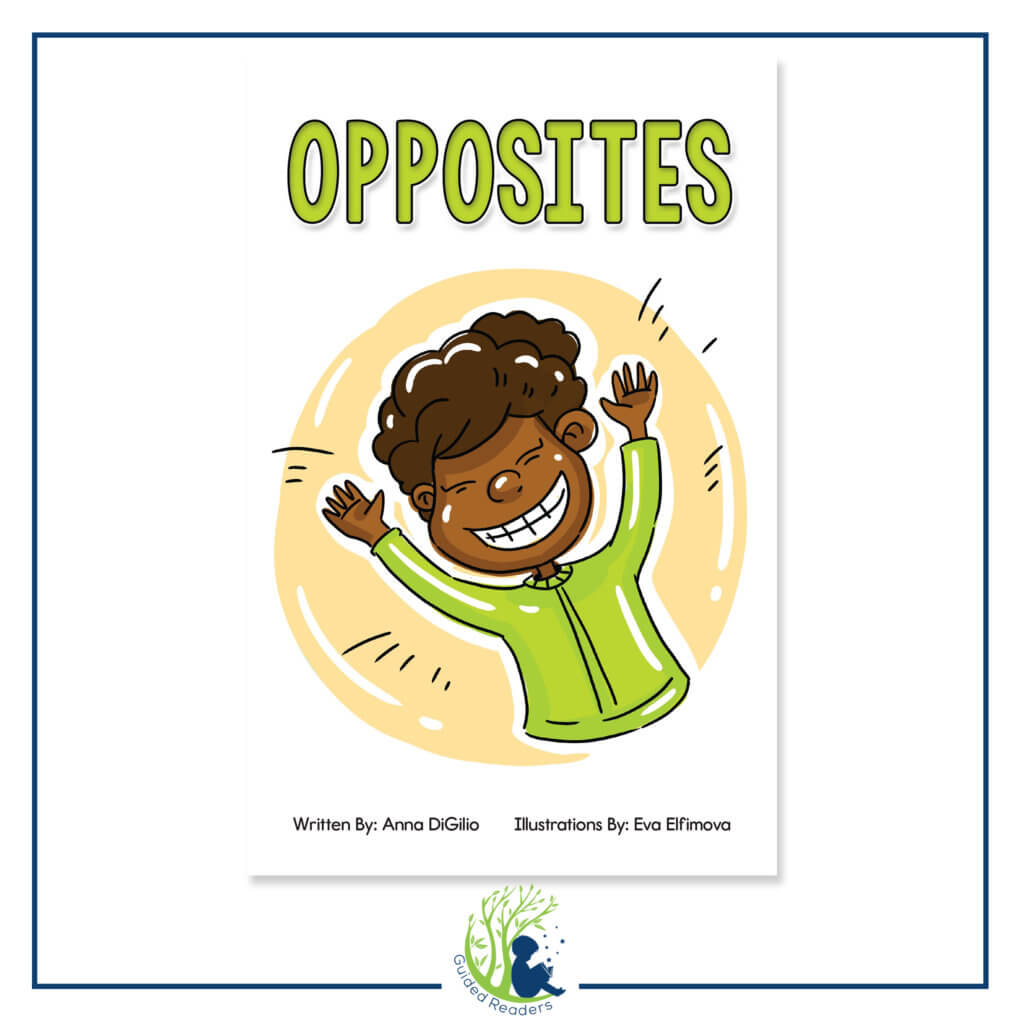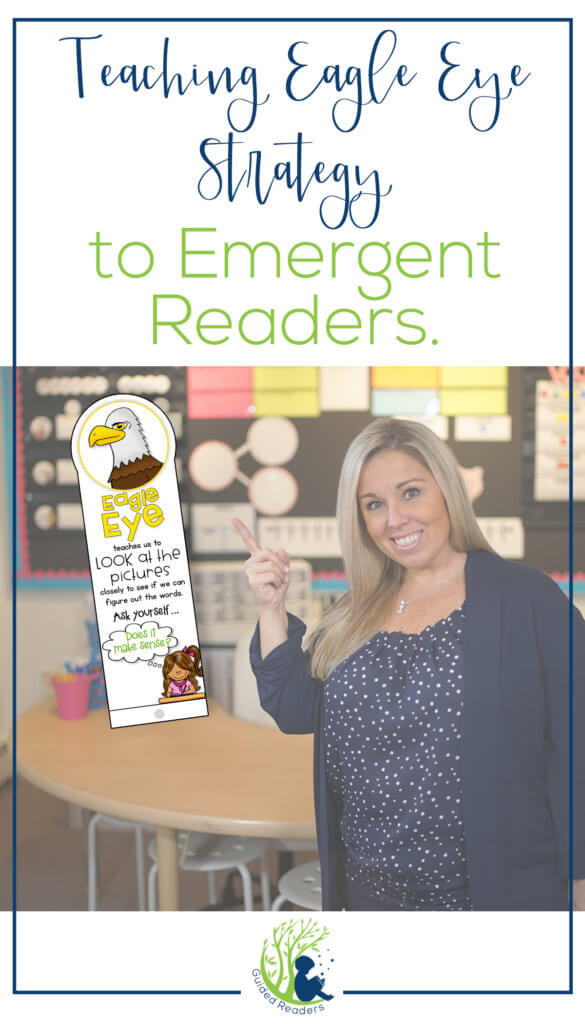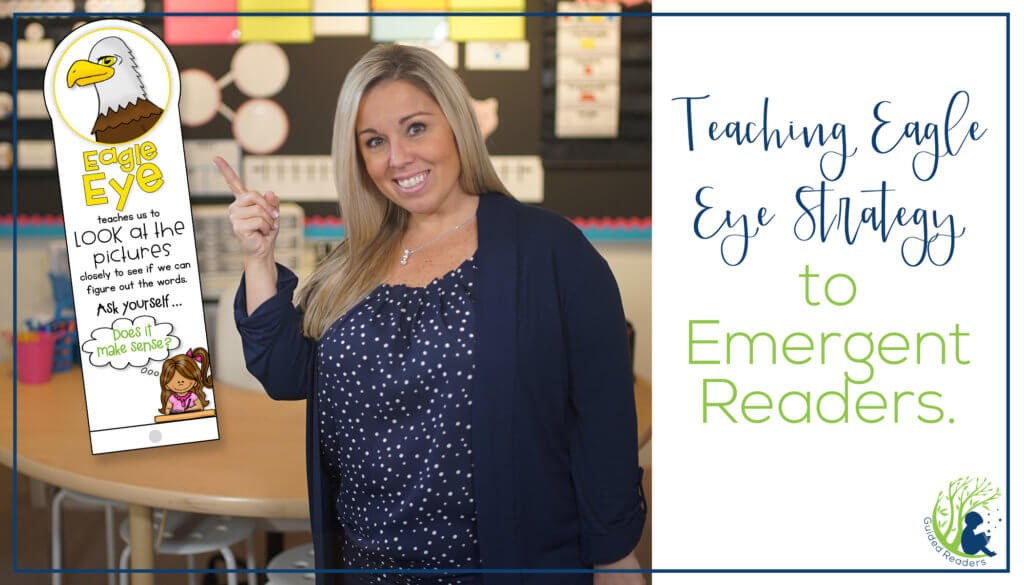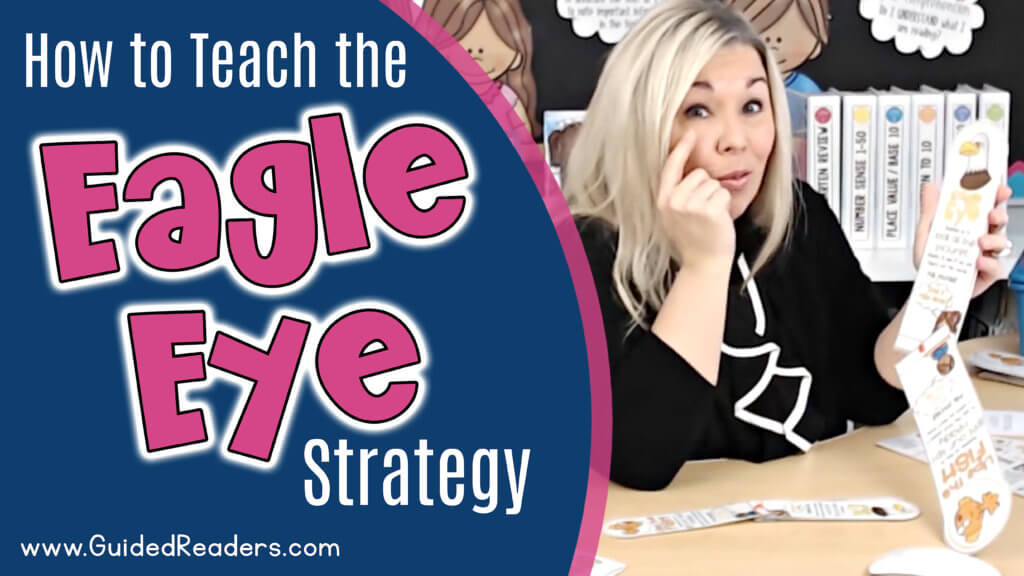Are you wondering how to tackle the task of teaching reading and decoding strategies to your Emergent readers? Readers at the Emergent level are reading on levels A through C. They rely heavily on the semantic cueing system, using the pictures they see to make meaning. There are some strategies that may be too advanced for readers at this level; but Emergent readers are definitely ready to learn the Eagle Eye reading strategy.
Light the Spark
The key to teaching decoding and comprehension strategies is to use engaging activities to spark meaningful learning and help your students understand and connect with the texts they read. This applies to readers of any level!
That’s why the reading strategies you teach in whole class and Guided Reading lessons and the reinforcement activities you provide in literacy stations are so important. It’s all about the spark, my friend!
So can you ignite that spark of learning as you teach reading strategies to your Emergent readers? The answer is yes!
Emergent Readers are Ready to Learn the Eagle Eye Reading Strategy

It’s important to remember that students at the Emergent level need ample time to concentrate on learning sight words and decoding basics. You can begin to introduce a few simple comprehension strategies also. Teach reading strategies in a series of whole group lessons; then reinforce them with more modeling and practice during guided reading .
To help Emergent readers build a basic foundation for decoding and comprehension, first teach and model the strategy of using pictures to monitor for meaning. Since Emergent readers rely heavily on the pictures in the books they read, this is the first reading strategy you should introduce to the students in this group. So let’s break out our Strategy Fans and learn how to teach the strategy called Eagle Eye.
Eagle Eye Refers to Meaning and Semantic Cues
As they look at the pages of a book, your little Emergent readers use the pictures as sources of information. Remember: When it comes to the three cueing systems, Emergent readers rely almost exclusively on meaning or semantic cues. (Read more about the three cueing systems in my previous post, 5 Great Tips for Analyzing MSV Cues in Running Records.) Illustrations help Emergent readers construct meaning from pages of text, regardless of how simple that meaning may be. That’s where Eagle Eye swoops in.
To make it more fun and engaging as you teach, you could use an eagle stuffed animal as a visual! Of course you’ll also use strategy fans to give students the visual prompts they need to help them remember each of the new strategy they’ll learn. Each lesson in my Guided Readers online guided reading program contains a strategy fan template you can print to create these fans, as well as an instructional booklet to guide you in teaching them.
Now let’s look at how you would use the strategy fans to teach the Eagle Eye reading strategy in a whole class setting.
Teaching the Eagle Eye Reading Strategy in a Whole Group Setting
Start by having the students open their strategy fans to Eagle Eye; then introduce it with a discussion about how eagles have excellent eyesight… just like them. Explain that even though eagles fly very high above the ground, they use their sharp eyes to find food for themselves and their babies. Next, tell the students that their new friend Eagle Eye loves to look really closely at the pictures on the page to help him find clues about how to read them. Tell them that when they’re reading a new book they should use their eagle eyes to look at the pictures. Explain that the pictures can help us understand the words on the page.
Next, READ the words on the strategy fan to your students. Say, “Eagle Eye teaches us to LOOK at the pictures closely to see if we can figure out the words. So we look at the pictures and we ask ourselves…’Does it make sense?’”
“Remember boys & girls, when you look at the picture with your eagle eyes, it’s very important to ask yourself if the word you used makes sense in the sentence and to see if it matches the picture on the page. If not, try again!”
Using a big book, cover a word; then show the students how to look at the illustration to help solve the word. (Choose a book that has plenty of sight words and good picture clues.)
Teaching the Eagle Eye Strategy in Guided Reading

Now let’s look at how we might use the Eagle Eye strategy in an Emergent readers small group lesson using the book, “Opposites” from Guided Readers, my new online guided reading program. When planning guided reading lessons, it’s important to intentionally choose a decoding strategy to focus on for each lesson. Once your students have begun learning the strategies, use the information you gather from running records to help determine which strategies need to be reviewed.
After the Read & Prompt and book discussion, tell your students to grab their strategy fan and open it to the Eagle Eye strategy. Remind them again of how the strategy works: “Eagle Eye has sharp eyesight. He uses the pictures in a story to find clues that will help him figure out words he doesn’t know. So boys and girls, let’s be eagles and use the pictures to help us read the words that we might get stuck on.”
Sticky Strategy
Be sure to have a pad of sticky notes with you as you teach this strategy. Take them page-by-page through the book, starting with the first page. Cover the word “hot,” and say something like, “Boys and girls, what’s going on on this page? Can you tell how the boy might be feeling? What’s that up in the sky? That’s right–it’s the sun! Now, what do you think that might tell us?”
“Look at the words at the bottom of the page. Let’s read them. ‘He is….’ Now what do you think this next word might be? Remember we can use our Eagle Eye strategy, so let’s look carefully at the picture. This little boy is standing in the sun.”
Then REMOVE the sticky note to uncover the word. Say, “What do you think this word is? Yes, it’s ‘hot!’ Let’s read it together, ‘h-o-t, hot.’”
Finally, read the entire sentence. Say, “This sentence says, ‘He is hot.’ Great job boys & girls! You used your Eagle Eyes to figure out a word! Now whenever you come to a word that might be hard to read, remember to look at the pictures and use your Eagle Eye strategy to help you figure it out!”
Now you’ll do the same with the following pages, showing your kiddos how to use the Eagle Eye reading strategy to help them solve the words on those pages, such “She is cold” and “He is wet.”
A Foundational Comprehension Strategy
Because Eagle Eye is a foundational decoding and comprehension strategy, it’s such an important tool for your Emergent readers to grasp! As they begin to understand how the words on the page correspond with the pictures, this simple strategy will really help you to strike that spark of learning. Teach your little Emergent readers to open their eyes and look at the pictures!
If you found this post helpful, I hope you’ll head on over to my YouTube channel to see the video I’ve posted about teaching the Eagle Eye strategy. (Or click the link below). You’ll see plenty of examples of how I teach this strategy using guided reading texts from my new online guided reading program, Guided Readers.
Reading Strategies | How to Teach the Eagle Eye Strategy
Guided Readers Helps Strike the Spark
If striking the spark of learning is your goal, then check out Guided Readers. I’ve heard so many positive comments from teachers who are loving what this online guided reading program has to offer. They are over-the-moon excited about the engaging, professionally illustrated texts, as well as the standards-based lesson plans & resources and the easy-to-use digital interactive reader!
All the texts in Guided Readers are professionally leveled by Fountas & Pinnell and Lexile.com. Your students will LOVE them; and YOU’LL love the way Guided Readers contains everything you need to implement an effective Guided Reading program in your classroom!
Are you ready to ignite that spark of learning and ROCK your literacy instruction? Then click here to check-out Guided Readers!



